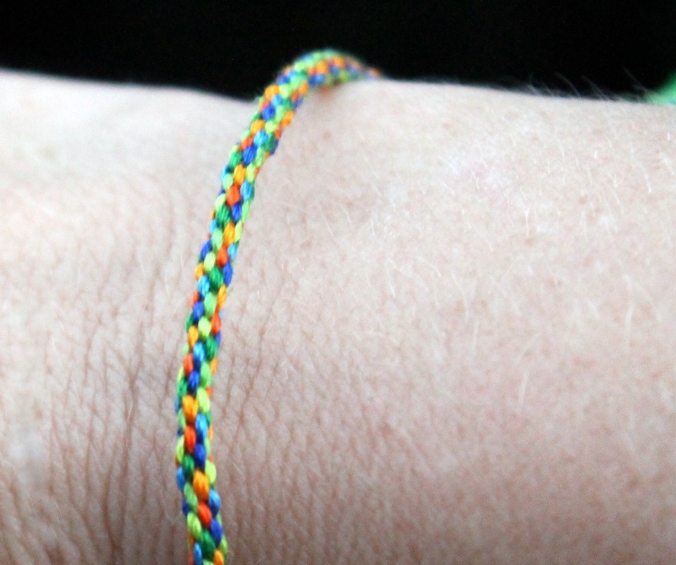
Peta Penguin
Christmas is all about traditions; such as, baking cookies, parties, big breakfasts, Christmas music, hanging stockings, and putting up the Christmas tree. It is hard to imagine how we would make it through the dark winter months without this festive time of year. I might actually enjoy Christmas even more now as an adult than I did as a child. I can carry on traditions from my childhood as well as creating new ones.
Every year I like to have a new ornament for my Christmas tree. Decorating the tree is a walk down memory lane. I have an ornament made by both my kindergarten and first grade teachers. I also have ornaments made by relatives and ornaments from around the world given to me by friends.
Last year I started a knitted Christmas ornament series with the Peta Penguin ornament. Peta was worked in fingering weight yarn using intarsia in the round. Always the fashionable penguin, Peta is sporting a red winter hat.
This year I am continuing the tradition with the Fa La Llama. My family is quite taken with llamas and have showed more interest in this cutie than any of my previous knitting projects. They have offered me plenty of advice on what would make the llama the cutest llama that it could be. Currently I am finding my “test llamas” all over the house and riding on my spinning wheel. It must be elves.

Fa La Llama
The Fa La Llama is worked in worsted weight yarn and is shaped using short rows. The legs and ears are made using i-cord. The tail is braided. Since all fashionable ornaments must be appropriately dressed, this llama is wearing a festive red scarf.
The pattern incudes four pages with plenty of photos to show you exactly how the llama is assembled. I plan to hang a llama on my tree and to use a couple more to trim packages. Since they are a pretty quick knit maybe everyone will get one this year!
As my Christmas gift to the knitters of the world, I am offering the pattern for free on Raverly through the end of December. If you love Peta Penguin and the Fa La Llama be sure to follow me on Facebook, Instagram, Twitter, or WordPress to make sure that you don’t miss next years pattern!
Download the Fa La Llama in my Ravelry store here!









 Recently my kids have become passionate about fun socks. They have bought socks with pictures of everything from avocados to hedgehogs, from Mackinac Island to Mammouth Caves. It seems about anything you can imagine has been printed on a sock. As a result, I decided it was time to start making my own fun socks. Since knitters everywhere love fiber-bearing animals I started by designing a
Recently my kids have become passionate about fun socks. They have bought socks with pictures of everything from avocados to hedgehogs, from Mackinac Island to Mammouth Caves. It seems about anything you can imagine has been printed on a sock. As a result, I decided it was time to start making my own fun socks. Since knitters everywhere love fiber-bearing animals I started by designing a  intarsia to preserve the elasticity of the fabric. I also decided to knit the leg back and forth with a seam because the invisible seam generally looks neater than intarsia in the round.
intarsia to preserve the elasticity of the fabric. I also decided to knit the leg back and forth with a seam because the invisible seam generally looks neater than intarsia in the round.

 Blocking evens out the stitches as well as stretching the fabric longer and wider. You can see the significant difference between the blocked and unblocked mitten.
Blocking evens out the stitches as well as stretching the fabric longer and wider. You can see the significant difference between the blocked and unblocked mitten.
 tinking becomes necessary unless you have resigned yourself to starting over.
tinking becomes necessary unless you have resigned yourself to starting over.

 The right balance of new and easy. A project should have some easy sections that you can just fly through while having other parts that capture your attention. This may include a new type of construction or an interesting stitch pattern. The
The right balance of new and easy. A project should have some easy sections that you can just fly through while having other parts that capture your attention. This may include a new type of construction or an interesting stitch pattern. The 



 Vogue Knitting: The Ultimate Knitting Book contains both color pictures and hand drawings of individual stitches on virtually every page. The book begins with information on different yarn types, knitting needles, and notions. Apparently there is paper yarn even. Everyone can learn something new in this book!
Vogue Knitting: The Ultimate Knitting Book contains both color pictures and hand drawings of individual stitches on virtually every page. The book begins with information on different yarn types, knitting needles, and notions. Apparently there is paper yarn even. Everyone can learn something new in this book!
 designing your own garments. The book also includes a section on finishing techniques. The chapter on designing sweaters extends across 75 pages. This expansive guide covers sizing, different types of body and sleeve shaping, collars, pockets, buttons, and zippers. Another chapter contains 15 pages on designing shawls. The section includes square, rectangular, triangular, circular, and crescent shaped shawls.
designing your own garments. The book also includes a section on finishing techniques. The chapter on designing sweaters extends across 75 pages. This expansive guide covers sizing, different types of body and sleeve shaping, collars, pockets, buttons, and zippers. Another chapter contains 15 pages on designing shawls. The section includes square, rectangular, triangular, circular, and crescent shaped shawls.






